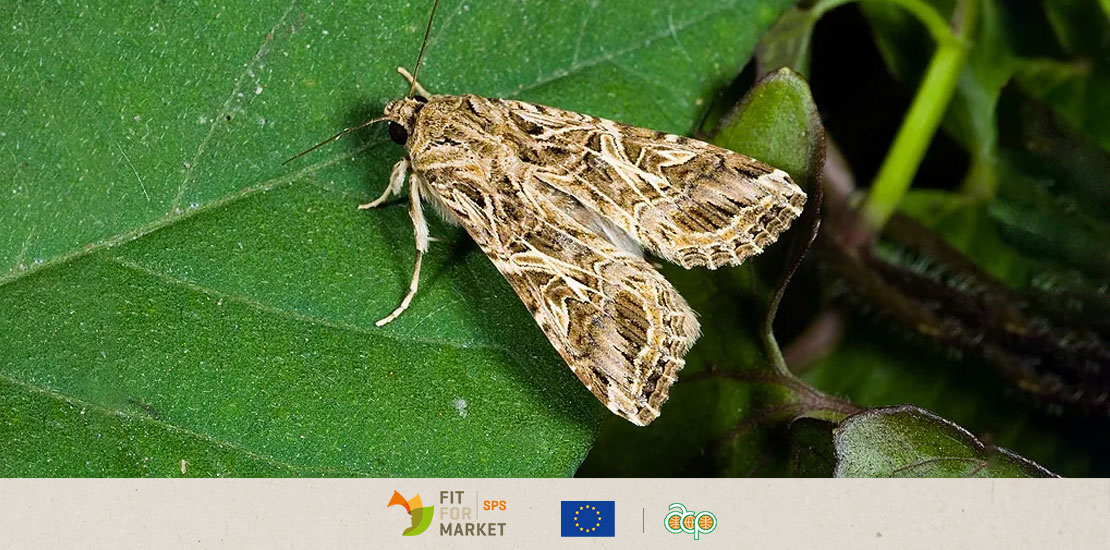EU and GB MRL changes in 2022 – July – September 2022
- 07/10/2022
- Posted by: Gaetan Dermien
- Category: ACP EN, News

Changes to EU and GB pesticide maximum residue levels
Following the departure of the United Kingdom from the European Union (EU), COLEACP’s monitoring of pesticide regulations now covers MRL changes in both the EU and Great Britan (GB), enabling us to keep COLEACP members and partner-beneficiaries up-to-date.
Note that EU MRLs still apply in Northern Ireland (GB covers only England, Scotland and Wales).
During the period July-September 2022, we have been highlighting significant changes to EU MRLs that affect 50 active substances, 19 of which are important for ACP export horticulture. During this same period, changes of MRLs in GB affect 6 active substances, of which 3 are considered key substances for ACP horticulture (metalaxyl-M, flonicamid and chlorothalonil).
The EU and GB have also recently notified the World Trade Organization (WTO) of additional proposed changes involving a further 18 substances including 8 that are key in ACP horticulture (flutriafol, profenofos, thiabendazole, triadimenol, cyromazine, triflumizole, novaluron and tetraconazole). Note that comments and concerns can be submitted to the WTO via the national contact points.
This news also presents the latest updates regarding the lowering of EU MRLs of mancozeb.
How will ACP producers/exporters be affected?
Changes to EU/GB Maximum Residue Limits (MRLs) also apply to products that are exported to the EU/GB. Growers producing for export may need to adapt their practices to meet the new MRL or, if this is not possible, stop using these products and look for an alternative method of pest management.
What should ACP producers/exporters do now?
For each use of the plant protection products (PPPs) involved, the Good Agricultural Practices (GAPs) in place will need to be checked to ensure compliance with the new MRLs. This is essential to avoid interception and destruction of exported produce at the EU/GB borders.
If you use these PPPs, it is important to liaise with your producer /exporter associations and national authorities to check whether the GAPs you currently apply are still appropriate, and enable you to meet the new MRLs. In most cases, where the MRL is lowered, adaptations to the GAP will be needed (dose rate, number of applications, application method or pre-harvest interval).
If you have any major concerns about these changes, and fear that you will be left without an effective and locally available alternative, please contact COLEACP at: network@coleacp.org.
In this news, ‘key active substances’ refers to those used/registered in one or more ACP country on horticultural crops that are frequently exported regionally or internationally. While COLEACP makes every effort to provide comprehensive information about relevant regulatory changes, it is possible that some PPPs or crops relevant to you are not included in our list of key substances/crops. We recommend therefore that you check the final section of this news, which details all the changes in 2022, to make sure that you are aware of any other changes that could affect you.
Changes to EU MRLs
The European Commission (EC) has recently issued notifications of changes to plant protection product (PPP) maximum residue levels (MRLs) within the European Union (EU). These concern 50 PPPs (), including 19 key substances that are of particular importance for African, Caribbean and Pacific (ACP) horticulture:
- fludioxonil (applicable from 10 August 2022)
- ametoctradin (applicable from 14 August 2022)
- dodine (applicable from 14 August 2022)
- profenofos (applicable from 14 August 2022)
- boscalid (applicable from 18 August 2022)
- metaflumizone (applicable from 18 August 2022)
- pyraclostrobin (applicable from 18 August 2022)
- spirotetramat (applicable from 18 August 2022)
- thiabendazole (applicable from 18 August 2022)
- Cyprodinil (applicable from 19 September 2022)
- chlorantraniliprole (applicable from 22 February 2023)
- emamectin benzoate (applicable from 22 February 2023)
- azoxystrobin (applicable from 25 February 2023)
- cymoxanil (applicable from 25 February 2023)
- iprovalicarb (applicable from 25 February 2023)
- methoxyfenozide (applicable from 28 February 2023)
- propoxur (applicable from 28 February 2023)
- Spinosad (applicable from 28 February 2023)
- Thiram (applicable from 28 February 2023)
Table 1. European Union (EU) maximum residue level (MRL) changes published during the period July-September 2022, presents the new MRLs for crop-PPP combinations that are important for ACP horticulture entering into force during the period July to September 2022.
Table 2. European Union (EU) maximum residue level (MRL) changes introduced during the period July-September 2022, indicating the key substances and crops most affected (in green: higher MRLs; in red: lower MRLs).
Changes to GB MRLs
During the period July-September 2022, the UK Health and Safety Executive (HSE) published changes to 6 active substances MRLs within Great Britan (Table 3). Three of these, Metalaxyl-M (applicable from 09 September 2022), flonicamid (applicable from 22 September 2022) and chlorothalonil (applicable from 05 March 2023), are key substances for ACP horticulture (Table 4).
Table 4. Great Britain (GB) maximum residue level (MRL) changes during the period July-September 2022 indicating the key substances and crops most affected (in green: higher MRLs; in red: lower MRLs).
Further Proposed MRL changes
A further 18 proposed (draft) MRL changes have recently been notified to the WTO (Table 5), of which 8 are key for ACP horticulture (flutriafol, profenofos, thiabendazole, triadimenol, cyromazine, triflumizole, novaluron and tetraconazole).
All draft regulations on MRL changes are notified to the World Trade Organization (WTO) under the WTO Sanitary and Phytosanitary Information Management System for a commenting period of 60 days. This obligation applies to all member countries of the WTO, as the lowering of MRLs might lead to trade barriers. This is an opportunity to be informed in advance of proposed changes, and to take any necessary action before the new regulation comes into force. It is also an opportunity to submit concerns about potential difficulties (trade barriers) that these changes could create. WTO member countries can submit comments via their WTO National Contact Point.
Mancozeb: progress on lowering of EU MRLs
Mancozeb is a commonly used fungicide for control of a wide range of pathogens including blights, leaf spots, scabs and rusts on crops. It is a no longer authorised active substance in the EU since 5 January 2021 (Regulation (EU) 2020/2087).
As mentioned in previous news, the MRL change for mancozeb is complicated. The mancozeb MRLs are considered as a group, combined with all the other dithiocarbamates. The MRLs cannot be lowered for mancozeb, before considering the other substances in the group (maneb, metiram, propineb, thiram and ziram).
The European Food Safety Authority (EFSA) started the review of MRLs for all substances in the dithiocarbamate group (including mancozeb) on 15 December 2020. The progress of the review of MRLs under Article 12 of Regulation (EC) No 396/2005 was updated in July 2022 and indicates a delay in the publication of the EFSA opinion, which is now expected on 15 December 2022 (originally scheduled for December 2021, then 2 March 2022).
After the publication of the opinion, the procedure for the publication of the lowering of an MRL usually takes about 3-4 months. The MRL normally comes into force 20 days later, followed by a grace period of (normally) 6 months. Under this scenario, the MRL would come into force at the end of September 2023.
Based on these estimates, COLEACP predicts that the MRLs for mancozeb will probably not be lowered until mid-2023. However, this is not definitive and the situation may change, especially as the grace period may be shortened, and the EC has not yet communicated the final timetable.
All MRL changes that are planned to enter into application in
Table 6 shows all new MRLs are planned to enter into application in 2022 and 2023. If any PPP that you use on crops for export to the EU or GB is listed here, we recommend that you check the regulation itself using the link provided. If you require additional information, or face particular problems as a result of these changes, please contact COLEACP at: network@coleacp.org.

![EU and GB MRL changes in 2025 (January-March 2025) 9-FFM+-[ENG]](https://news.colead.link/wp-content/uploads/2024/06/9-FFM-ENG-150x150.jpg)


